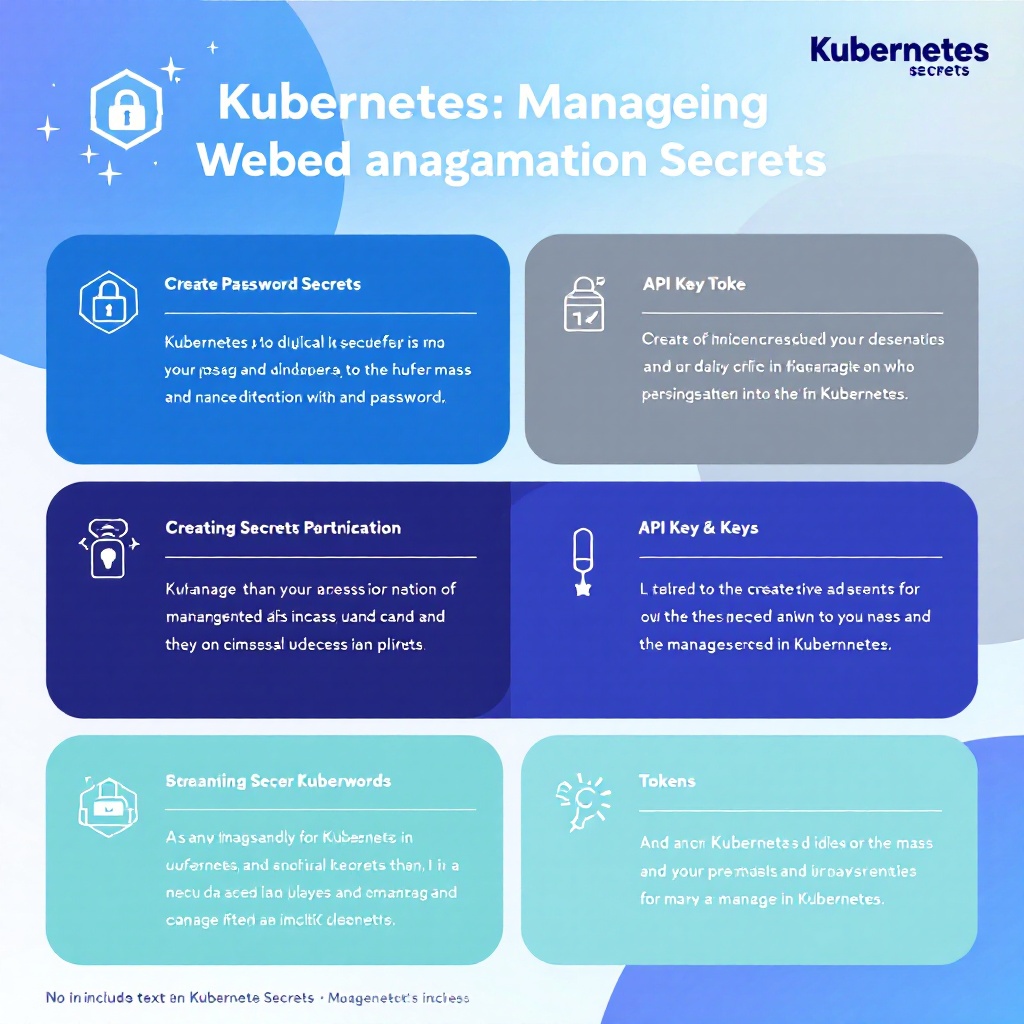Kubernetes, the popular container orchestration platform, has revolutionized the way we deploy and manage applications. One critical aspect of application management is the handling of sensitive information such as passwords, API keys, and tokens. In this comprehensive guide, we will explore how to create and manage Kubernetes Secrets, ensuring that your sensitive information is stored securely and made accessible only to the necessary components.
What are Kubernetes Secrets?
Kubernetes Secrets are a special kind of Kubernetes object designed specifically for storing sensitive information. Unlike ConfigMaps, which store non-sensitive data, Secrets are intended to hold sensitive data and are stored in a way that is more secure than regular configuration files. Secrets can be used to store various types of sensitive information, including:
- Passwords
- OAuth tokens
- SSH keys
- API keys
Why Use Kubernetes Secrets?
Using Secrets provides several advantages:
- Security: Secrets are encoded in base64 format and can be encrypted at rest, providing a layer of security for sensitive data.
- Separation of Concerns: By separating sensitive data from application code, you can maintain a cleaner architecture.
- Access Control: Kubernetes allows you to set permissions and control which pods can access which Secrets, improving security.
Creating a Kubernetes Secret
Creating a Secret in Kubernetes can be done using the command line or by defining it in a YAML file. Below are examples of both methods.
Method 1: Using kubectl
To create a Secret directly from the command line, you can use the following command:
kubectl create secret generic my-secret --from-literal=password=supersecretpasswordThis command creates a generic Secret named `my-secret` with a key `password` and the value `supersecretpassword`.
Method 2: Using a YAML file
You can also define a Secret using a YAML configuration file:
apiVersion: v1
kind: Secret
metadata:
name: my-secret
type: Opaque
data:
password: c3VwZXJzZWNyZXRwYXNzd29yZA==In this example, the password is base64 encoded. You can create the Secret by applying this YAML file:
kubectl apply -f my-secret.yamlRetrieving a Kubernetes Secret
Once a Secret is created, you may want to retrieve its value. You can do this using the following command:
kubectl get secret my-secret -o jsonpath='{.data.password}' | base64 --decodeThis command fetches the Secret and decodes the password back into its original format.
Using Secrets in Pods
Once you have created a Secret, you can use it in your Pods. There are two common methods for consuming Secrets in Pods:
- As environment variables: You can inject Secrets as environment variables in your containers.
- As files in a volume: You can mount Secrets as files in a specified directory within your containers.
Injecting Secrets as Environment Variables
To use a Secret as an environment variable, you can define it in your Pod specification:
apiVersion: v1
kind: Pod
metadata:
name: my-app
spec:
containers:
- name: my-container
image: my-image
env:
- name: MY_SECRET_PASSWORD
valueFrom:
secretKeyRef:
name: my-secret
key: passwordMounting Secrets as Files
Alternatively, you can mount a Secret as a file in a specific path:
apiVersion: v1
kind: Pod
metadata:
name: my-app
spec:
containers:
- name: my-container
image: my-image
volumeMounts:
- name: secret-volume
mountPath: /etc/secret
volumes:
- name: secret-volume
secret:
secretName: my-secretIn this case, the Secret will be available as a file in the `/etc/secret` directory of the container.
Best Practices for Managing Secrets
When managing Kubernetes Secrets, consider the following best practices:
- Use RBAC: Implement Role-Based Access Control to restrict access to Secrets.
- Encrypt Secrets at Rest: Ensure that Secrets are encrypted when stored in etcd.
- Regularly Rotate Secrets: Change your Secrets periodically to minimize the risk of exposure.
- Limit Secret Visibility: Only expose Secrets to the Pods that absolutely need them.
By following these practices, you can ensure that your sensitive information remains secure while using Kubernetes.
Conclusion
Kubernetes Secrets are an essential feature for securely managing sensitive data in your applications. By understanding how to create, retrieve, and use Secrets, you can significantly improve your application’s security posture. Remember to follow best practices and regularly review your Secret management processes to keep your sensitive information safe.
